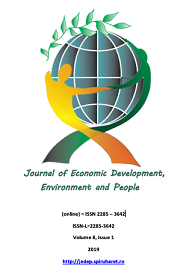Inflation volatility as a phenomenon monetary-fiscal combination in Indonesia
Inflation volatility as a phenomenon monetary-fiscal combination in Indonesia
Author(s): Eli Marnia Henira, Raja Masbar, Chenny SeftaritaSubject(s): International relations/trade, Political economy, Economic development, Present Times (2010 - today), Fiscal Politics / Budgeting
Published by: Editura Fundaţiei România de Mâine
Keywords: Inflation; Monetary; Fiscal; ARDL Model; Indonesia;
Summary/Abstract: Inflation is generally seen as a monetary phenomenon whose effective control is through the management of the money supply, interest rates, and exchange rates. Another opinion views inflation as a fiscal phenomenon that is controlled through the effectiveness of tax revenues and state expenditures and avoiding a budget deficit that triggers an increase in government external debt. This study aims to examine and analyze the volatility of inflation as a phenomenon monetary-fiscal combination in Indonesia. The analysis was carried out descriptively and quantitatively through the Autoregressive Distributed Lag (ARDL) Model using secondary time series data from the 1st quarter of 2009 to the 2nd quarter of 2020. The results showed the dominance of the positive influence of interest rates from the monetary side and foreign debt from the fiscal side, as well as the ineffective role of tax revenue in reducing inflation in Indonesia. Bank Indonesia needs to streamline policies related to interest rate management in regulating the money supply. The government needs to make efforts to increase the effectiveness of tax revenues and state spending to minimize its foreign debt.
Journal: Journal of Economic Development, Environment and People
- Issue Year: 9/2020
- Issue No: 4
- Page Range: 80-95
- Page Count: 16
- Language: English

